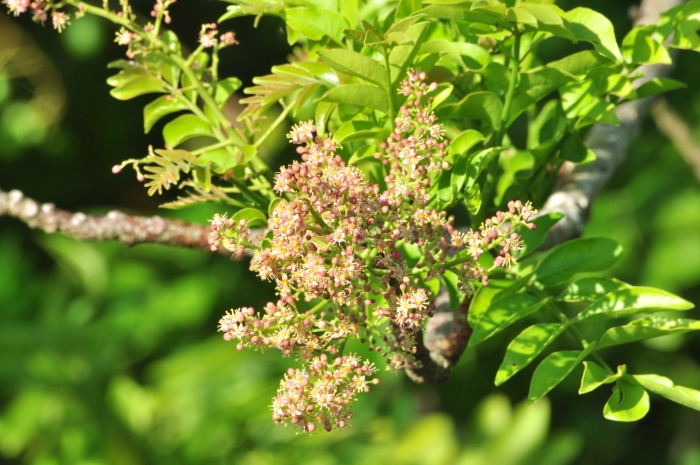Jocote
(Spondias purpurea)
Jocote (Spondias purpurea)
/
/

© Oscar Marín
CC BY-SA 4.0
Image By:
© Oscar Marín
Recorded By:
Copyright:
CC BY-SA 4.0
Copyright Notice:
Photo by: © Oscar Marín | License Type: CC BY-SA 4.0 | License URL: http://creativecommons.org/licenses/by-sa/4.0/ | Uploader: gesnerio | Publisher: iNaturalist |















Estimated Native Range
Summary
Spondias purpurea, commonly known as Jocote, is a deciduous tree native to the tropical dry forests and seasonally dry areas in the Americas, ranging from Mexico to Colombia. It typically grows to a height of 25-50 feet (7.5-15 meters) with a spreading canopy that can be quite broad relative to its height. The tree is known for its distinctive reddish-purple fruit, which resembles a plum in size and shape, and has a sweet yet acidic flavor. The fruit is commonly consumed fresh, used in beverages, or made into preserves. The flowering season occurs in early spring, with small white flowers that are not particularly showy. However, the fruit is quite noticeable and ripens to a bright purple or red, providing visual interest.
Jocote trees are valued for their fruit production and are often cultivated in home gardens and orchards within their native range. They are also used as living fences and in agroforestry systems. The tree requires full sun to partial shade, and while it is drought-tolerant once established, it benefits from regular watering during the fruiting season. It prefers well-drained soils and can adapt to a range of soil types. In cultivation, it is relatively low-maintenance but can be susceptible to fruit flies and other pests that target the fruit. Due to its potential invasiveness, it is important to consult local regulations before planting Spondias purpurea outside its native range.CC BY-SA 4.0
Jocote trees are valued for their fruit production and are often cultivated in home gardens and orchards within their native range. They are also used as living fences and in agroforestry systems. The tree requires full sun to partial shade, and while it is drought-tolerant once established, it benefits from regular watering during the fruiting season. It prefers well-drained soils and can adapt to a range of soil types. In cultivation, it is relatively low-maintenance but can be susceptible to fruit flies and other pests that target the fruit. Due to its potential invasiveness, it is important to consult local regulations before planting Spondias purpurea outside its native range.CC BY-SA 4.0
Plant Description
- Plant Type: Shrub, Tree
- Height: 16-49 feet
- Width: 15-25 feet
- Growth Rate: Moderate
- Flower Color: Green, Yellow
- Flowering Season: Spring
- Leaf Retention: Deciduous
Growth Requirements
- Sun: Full Sun
- Water: Medium
- Drainage: Medium, Fast
Common Uses
Edible*Disclaimer: Easyscape's listed plant edibility is for informational use. Always verify the safety and proper identification of any plant before consumption., Low Maintenance
Natural Habitat
Tropical dry forests and seasonally dry areas in the Americas from Mexico to Colombia
Other Names
Common Names: Purple Mombin, Jamaica Plum, Purple Plum, Spanish Plum, Red Mombin, Ciruela, Jocote
Scientific Names: , Spondias purpurea, Spondias cirouella, Spondias crispula, Spondias jocote-amarillo, Spondias lutea, Spondias mexicana, Spondias myrobalanus, Spondias myrobalanus, Spondias negrosensis
GBIF Accepted Name: